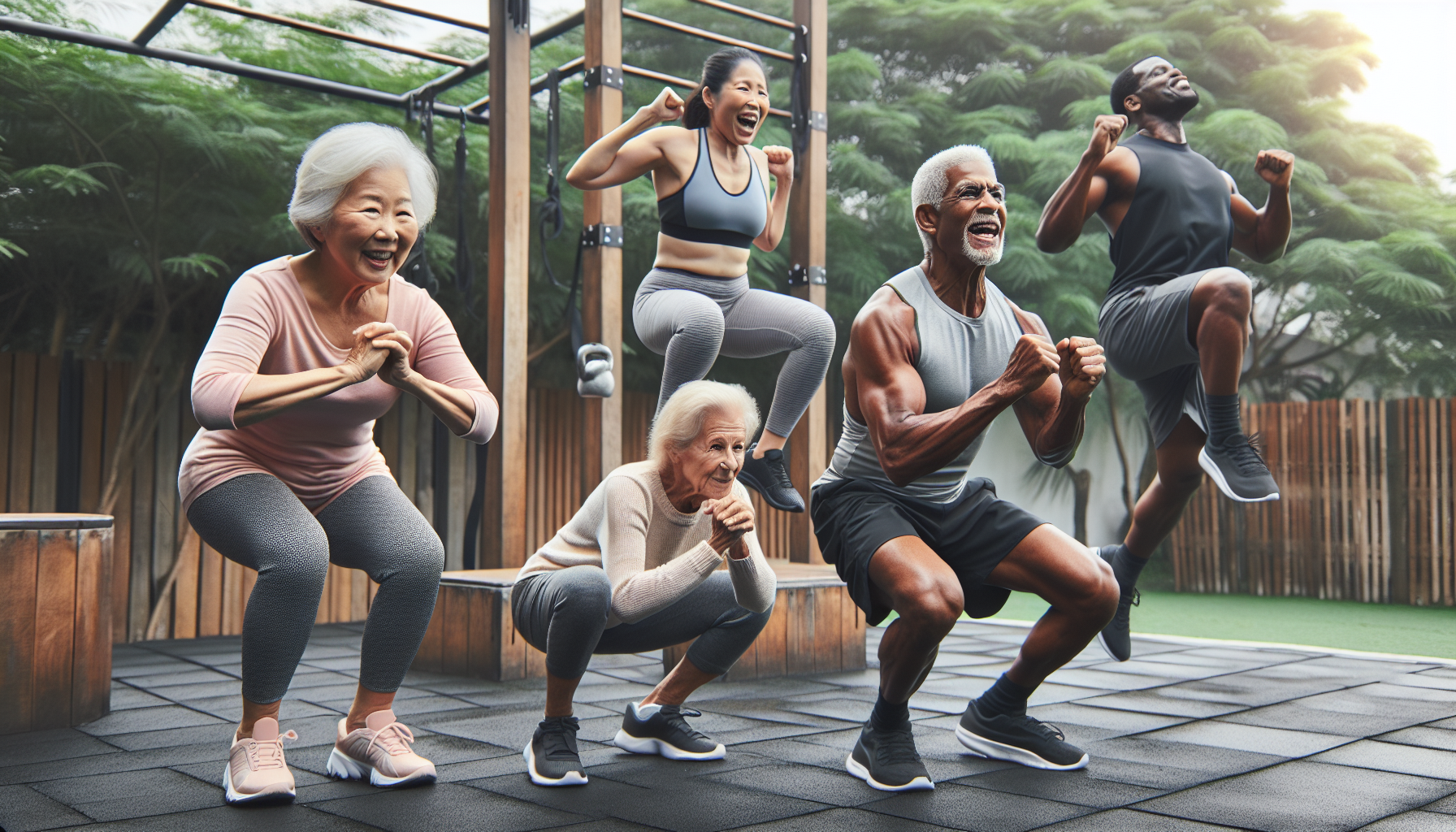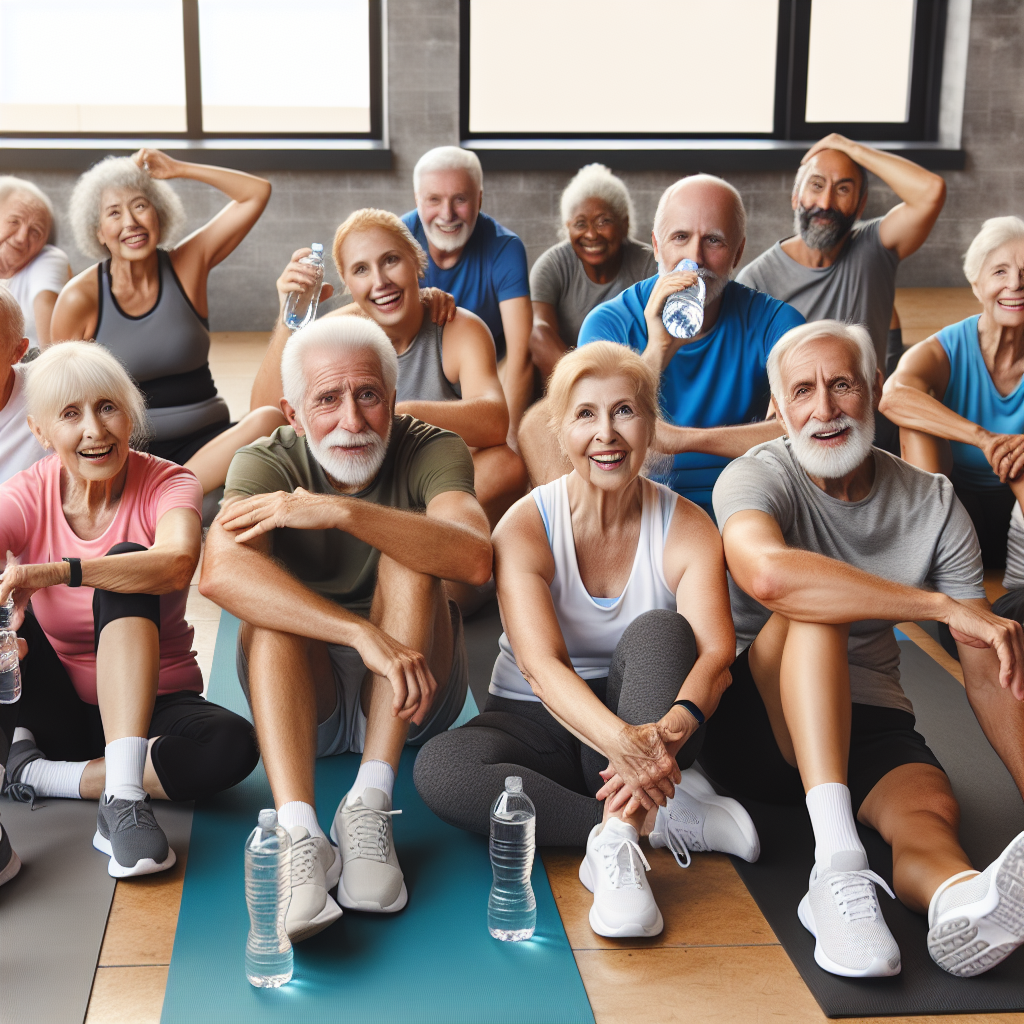As we age, our physical capabilities often begin to decline, leading to a decrease in overall fitness and health. However, High-Intensity Interval Training (HIIT) is emerging as a powerful tool to combat this decline, offering numerous benefits for older adults. This article explores the advantages of incorporating HIIT into the fitness routines of the senior population, highlighting how it can improve various aspects of health and wellbeing.
What is HIIT?
HIIT involves short bursts of intense exercise followed by a period of rest or lower-intensity activity. This form of training is adaptable, making it suitable for individuals of varying fitness levels, including older adults. The intensity and duration of the intervals can be adjusted to match the capabilities and goals of the participant, ensuring a safe and effective workout.
Benefits of HIIT for Older Adults
Improved Cardiovascular Health
One of the most significant benefits of HIIT for older adults is the improvement of cardiovascular health. Studies have shown that HIIT can effectively lower blood pressure, improve heart rate variability, and enhance aerobic capacity—critical factors in maintaining a healthy heart and reducing the risk of heart disease.
Enhanced Muscle Strength and Bone Density
As we age, muscle strength and bone density naturally decrease, leading to frailty and an increased risk of fractures. HIIT workouts, especially those incorporating resistance elements, can help reverse these effects. By stressing the muscles and bones, HIIT stimulates the body to adapt and strengthen, which is crucial for maintaining bone health.
Weight Management
Maintaining a healthy weight can become more challenging with age. HIIT is an efficient way to burn calories, not only during the workout but also for hours afterward due to the increased metabolic rate. This afterburn effect, known as excess post-exercise oxygen consumption (EPOC), helps older adults manage their weight more effectively.
Cognitive Function
There is growing evidence to suggest that regular physical activity, including HIIT, can have a positive impact on brain health. Exercise increases blood flow to the brain, which can improve cognitive function, enhance memory, and potentially lower the risk of dementia.
Improved Insulin Sensitivity
HIIT can lead to improvements in insulin sensitivity, which is particularly beneficial for older adults at risk of developing type 2 diabetes. Better insulin sensitivity means the body can more effectively regulate blood sugar levels, reducing the risk of diabetes-related complications.
Psychological Benefits
Engaging in HIIT can also have positive psychological effects, such as reducing symptoms of depression and anxiety. The release of endorphins during high-intensity exercise can improve mood and promote a sense of wellbeing.
How to Safely Implement HIIT for Older Adults
While HIIT has many benefits, it’s essential to approach this training method with caution, especially for older adults. Here are some guidelines to ensure safety and effectiveness:
- Start Slowly: Begin with low-intensity intervals and gradually increase the intensity as fitness improves.
- Monitor Health Conditions: Older adults should consult with a healthcare provider before starting HIIT, especially if they have existing health conditions.
- Focus on Recovery: Adequate rest between intervals and sessions is vital to prevent overtraining and injury.
- Incorporate Variety: Mix different types of exercises to target various muscle groups and prevent boredom.
- Listen to Your Body: Pay attention to how your body responds during and after workouts, and adjust accordingly.
Integrating HIIT with Other Health Strategies
For optimal health benefits, HIIT should be part of a broader health and fitness strategy. This may include:
- Balanced Nutrition: Following a nutrient timing for optimal performance approach can maximize the benefits of HIIT.
- Stress Management: Combining HIIT with practices like yoga for stress management can help balance the body’s stress response.
- Regular Health Check-ups: Monitoring digestive health and other aspects of wellness is important for older adults engaging in high-intensity workouts.
External Resources to Further Your Understanding
To deepen your understanding of HIIT and its effects on older adults, consider exploring these external resources:
- The American College of Sports Medicine provides guidelines and recommendations on exercise for older adults, including considerations for high-intensity workouts.
- The National Institute on Aging offers insights into how exercise can help manage and prevent diseases commonly associated with aging.
- Scholarly articles from peer-reviewed journals on platforms like PubMed detail the latest research findings on HIIT and aging.
Incorporating HIIT into Your Routine
If you’re an older adult looking to add HIIT to your fitness regimen, here’s a step-by-step approach:
- Consult with a healthcare provider to ensure HIIT is appropriate for you.
- Work with a fitness professional to design a HIIT program tailored to your needs and capabilities.
- Start with sessions that are shorter and less frequent, gradually building up as your fitness improves.
- Keep track of your progress and adjust your routine as necessary to continue challenging yourself without risking injury.
Conclusion
HIIT offers a wealth of benefits for older adults, from improving cardiovascular health to enhancing cognitive function. With the proper precautions and a tailored approach, HIIT can be a highly effective and enjoyable part of an older adult’s fitness journey.
Remember, the key to successfully implementing HIIT is to start slowly, prioritize safety, and listen to your body. By doing so, you can harness the power of high-intensity interval training to maintain and improve your health as you age.
As you embark on or continue your fitness journey, be sure to explore the wealth of information available on Avix Health and consult with healthcare professionals to ensure that your exercise routine is both safe and effective.



